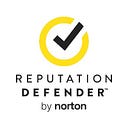Useful Tips To Combat A Negative Image Online
Online reputation is nothing more and nothing less than the image and prestige that is reflected on a brand on the Internet, and it is called reflection because this image is created thanks to the opinions of users who have consumed or not, a certain product or service, express various opinions about the brand, and depending on the satisfaction or intentions of the user, these opinions or reviews can be favourable or unfavourable for the brand.
Therefore, this online reputation is out of the brand’s control, since any Internet user can comment on the experiences or perception they have of the company and this can contribute positively or deconstruct its reputation.
Why is it important to manage your online reputation?
Because the Internet is the preferred tool of users when looking for information on any topic, it is proven that 80% of users will search online before any purchasing decision — through search engines, blogs, online advertising platforms, forums, social networks or through local references — to get all the information available on a particular product.
This has a direct influence on the image of the brand, because users trust and value the opinions and experiences others have had with the brand, product or service in particular, which generates a direct influence on the positioning of the brand in the mind of the person searching.
A good brand reputation generates confidence in the user from the first minute of contact with the company, this leads to a positive thought that increases the possibility that the user becomes a customer, becomes loyal to the brand and having felt good with the company and its product or service, this customer will generate favorable comments about the brand, which will be a plus for its reputation.
Useful tips to manage your online reputation
Maintaining this reputation is a great challenge, especially because of the ease with which users can now anonymously leave a comment either on your website, social networks or forums. It can also happen that a negative note is published in a media portal or on a news page, so you must have a proper management of the comments to avoid a reputation crisis that affect the brand image and impact on the growth of the company.
A tip for negative comments is prevention, do not wait until the criticism appears in the first places to do something, the important thing is to know how to manage an online reputation campaign, which must be designed with a methodical and strategic approach and should work from different fronts to optimize its effectiveness.
The first step to do so is to identify and monitor all the sites that speak ill of the brand by checking the use of the company’s name, a product or even an employee. This identification can be done using tools such as Google Alerts.
The second step is to analyze the tone of the messages, as this will be key to define the type of strategy to be done. The classification that can be made is whether the message is positive, negative or neutral.
The third step is to identify who the message comes from, sometimes it can be difficult because it is made anonymously, but when possible, it is necessary to analyse who is issuing the criticism and the level of influence they have in the network, either through the number of followers, page authority and other elements.
The fourth point to review is the platform on which it is published, whether it is a forum, a private page, a social network or a high authority domain such as a news portal.
With these elements you will be able to evaluate the level of difficulty to remove the result from the first page. The easiest thing to try is to ask the administrator of the page to remove the negative content, but it is very likely that this is not possible or that since it is a news portal it cannot be removed. To solve this in a more effective way is to implement an SEO positioning strategy by creating relevant content through the brand’s keywords. With this there will be a greater presence on the first page and the negative content will be left behind on the second or third page on Google.
